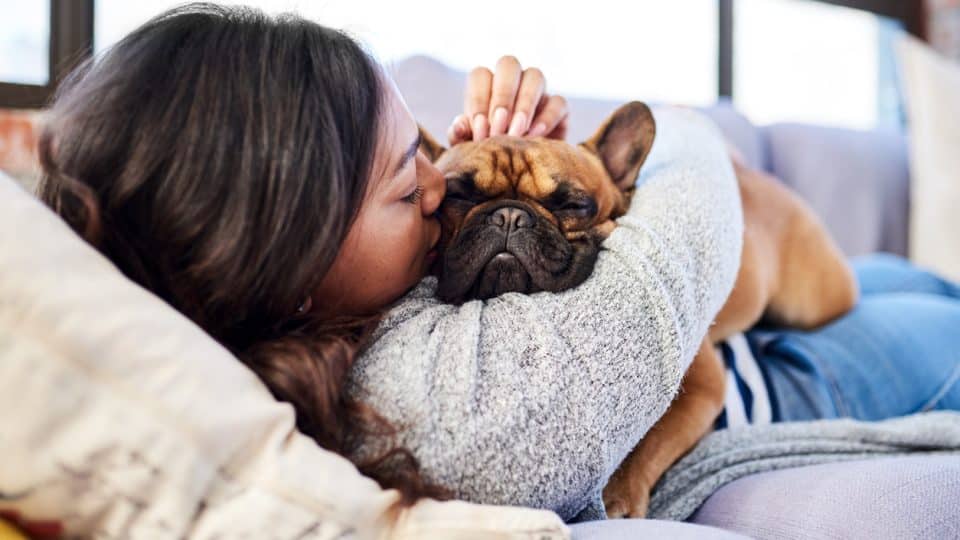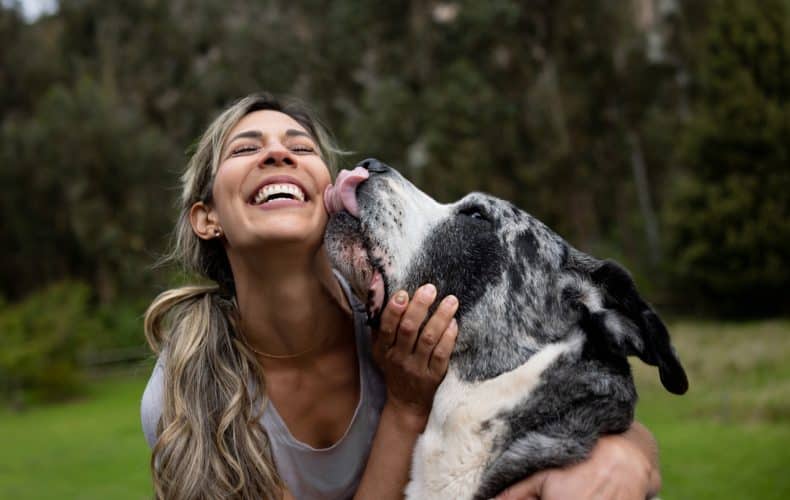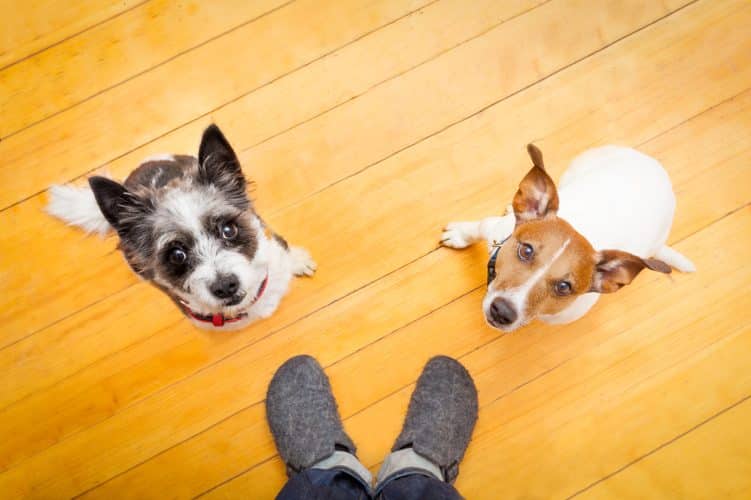If you’ve ever been on the receiving end of adorable puppy eyes and hopeful whines, you’ll probably know the difficulties of sticking to limits with your dog. As a loving dog owner, you might even worry that enforcing those limits—like not sharing the burger your pup is eyeing—will leave them doubting your love. But dogs don’t experience feelings in quite the same way people do.
Dogs do feel and express emotions, according to Dr. Erin Hecht and her team on The Canine Brains Project at Harvard University. However, assigning human words and root causes to these emotions isn’t always the best way to describe them.
“On one hand, it can be helpful to use words like “jealousy” for conceptualising and relating to dogs’ feelings,” says Dr. Julia Espinosa, a National Science Foundation postdoctoral fellow who studies how genes, the brain, and life experiences influence fear and reactivity in dogs.
But anthropomorphising—assigning human feelings to animals—carries the risk of missing signals that more accurately explain your dog’s feelings and needs. A better approach involves considering your dog’s feelings on a scale of very negative to very positive.
Read on to get the scoop on dog emotions.
What Feelings Do Dogs Experience?
Dogs have plenty of feelings! In fact, they express their emotions all the time through body language like tail wagging, ear position, and subtle facial expressions.
Love
Technically speaking, “love” is a human concept—but you can gauge your relationship with your dog by the strength of your bond and the level of trust between you.
Even though dogs don’t experience love in the same way as humans, they still form strong social bonds with their favourite humans, says Dr. Olivia Reilly, a National Institutes of Health postdoctoral fellow examining how hormones like oxytocin influence attachment bonds between dogs and children.
Experts believe oxytocin, a hormone released during social interactions, helps promote the formation of strong social bonds—and some evidence suggests dogs experience a surge of oxytocin when gazing into a favourite person’s eyes.
Fear
Dogs have the same hormones that play a role in the human stress response. This suggests they likely experience fear and anxiety in much the same way as humans do—although, of course, dogs and humans generally don’t fear the same things.
Sadness, Anxiety, or Depression
Dogs are very good at picking up on and mimicking human emotions. Actually, they’re a little too good at mimicking human emotions, says Dr. Nicholas Dragolea, certified dog behaviour consultant and founder of Fetched. When a dog senses their pet parent is feeling sad or anxious, they’re likely to feel sad or anxious themselves. This is called emotional contagion.
Dogs can also become sad, anxious, or depressed due to a change in their environment, including the loss of another pet or human.
Changes in a dog’s baseline behaviours can be signs of emotional distress, according to Dr. Dragolea. For example, a dog who suddenly loses interest in going for walks, playing fetch, or eating may be feeling blue.
Other Hurt Feelings
Dogs don’t have the same capacity for abstract thought as humans. So while they may experience fear and emotions similar to jealousy, they likely won’t dwell on those events or feel resentment or embarrassment.
Emotions like jealousy relate to a dog’s primal instinct to protect resources, including their pet parents, according to Dr. Dragolea. That’s why, if your dog catches you giving attention to another dog, they may consider this a threat and adjust their behaviour accordingly.
Even so, this doesn’t mean your dog’s feelings were hurt. What you interpret as hurt feelings may instead be more of a learned shift in behaviour. For example, dogs may act subdued when they hear a sharp or upset, “No!” because they associate the word with that negative body language and tone. They may also experience fear, which can damage your bond.
When Do Dogs Develop Feelings?
The emotional development of dogs is a complex topic that experts don’t yet fully understand.
They do know, though, that the basic structure of a dog’s brain doesn’t differ too much from a person’s brain. So, it’s likely that dogs and humans experience core emotions in comparable ways, says Sophie Barton, a PhD. candidate studying how selective breeding and training shape the canine brain.
Emotions that dogs and people may experience similarly include:
- Fear
- Frustration
- Attachment
- Playfulness
- Joy
Puppies may begin developing feelings as early as 3 weeks of age. Around this time, they:
-
- Startle when hearing loud noises, which suggests they feel fear.
- Show signs of sadness or distress when away from their mom or littermates.
- Begin initiating play during their critical period for socialisation, when they’re between 3 and 12 weeks old. This behaviour is likely influenced by positive emotions, such as happiness, Barton says.
Wolves also have similar brain structures and likely experience most of the same emotions, too. They aren’t domesticated, though, so they express these feelings toward other wolves, not humans.
Why Is It Important To Understand A Dog’s Feelings?
Empathy refers to the ability to understand another person’s (or a pet’s!) emotions and consider what they’re going through. When you understand your dog’s feelings, you’ll generally have an easier time interpreting their behaviour and responding to their needs.
That said, empathising with your dog may come with some limitations. “Reading dog signals can be surprisingly difficult for humans, and sometimes a signal can mean different things depending on the context,” Barton explains.
For example, if your dog tucks their tail or hides, you might think they feel guilty or embarrassed—when in reality, they’re afraid or in pain.
Ultimately, the best way to understand dogs involves learning their individual body language and vocalisations, considering the context, and then applying that to the feelings you know dogs can experience.
With some time and practice, it’s definitely possible to learn how to pick up on your dog’s feelings, Dr. Hecht says. “Thanks to our long history of co-evolution, dogs and humans are hardwired to understand each other—for the most part.”
Dogs also express emotions when communicating with other dogs, so paying attention to pup-to-pup interactions could teach you more about their feelings and reactions.
“Dogs use their entire body to communicate their emotions,” Espinosa says. “They’re expressing something about how they’re feeling pretty much all the time!”





